UV laser impacts PCB manufacturing
High-power, quasi-CW ultraviolet lasers are making laser direct imaging an increasingly attractive option over traditional film-based fabrication
by Sri Venkat and Torsten Rauch
Laser Direct Imaging (LDI) is a method for producing printed circuit boards (PCBs) that enables tighter registration between layers than is possible with traditional methods. LDI requires a continuous wave (CW), ultraviolet source and was historically serviced by large frame argon ion lasers. Over the past few years, quasi-CW, solid-state lasers with UV output have become available which are far more attractive for LDI in terms of their operating characteristics and overall cost of ownership.
Manufacturing multilayer PCBs
PCB manufacturers are challenged by the demand for increased miniaturization with ever increasing functional complexity. This translates into smaller features, higher densities, and a greater number of layers. At present, even “average” PCBs feature up to 15 layers, with state-of-the-art boards now reaching more than 40 layers.
PCB production starts with panels up to 24 x 24 inches consisting of a polymer (FR4) layer plated with ½ ounce or 12 microns of copper on both the front and back surfaces. A unique pattern of circuit lines, holes, and pads has to be created on both of these surfaces. The final PCB is assembled by lamination of several of these panels together with usually two outer panels (top and bottom), which are then covered in solder mask, ready for automated stuffing with components.
FIGURE 2. A schematic of a raster scanned LDI system. Image courtesy of Orbotech Ltd, Yavne, Israel.
In the traditional PCB production process, a computer plotter utilizes CAD/CAM data to create a pattern of opaque lines on a transparent film or phototool. This phototool is laid directly on to a photoresist-covered panel and “contact printed” by exposure to a UV lamp. Wet chemistry is then used to strip off the exposed parts of the photoresist and the underlying copper. Unexposed areas are left untouched.
The various layers are electrically interconnected using via holes that are created in the individual panels and then plated with copper before lamination. For this multi-layer arrangement to work properly, a high degree of spatial registration across the entire panel is required. The fundamental limitations on this registration are currently determined by the physical stability of the flexible phototools, which expand and contract with changes in humidity and temperature. Moreover, this expansion is not necessarily uniform across the panel and thus cannot be accurately predicted and pre-compensated (see Figure 1).
Laser direct imaging
LDI avoids these stability problems by completely eliminating the phototool. In the LDI system developed by Orbotech (Yavne, Israel), the CAD/CAM file is downloaded into the LDI workstation, which directly exposes the photoresist with a laser beam. Specifically, the laser is projected through a scan lens while the panel is moved in the orthogonal direction so that the entire board is rastered (see Figure 2). The laser power is switched by an external modulator to create the necessary pattern.
A significant benefit of LDI is the cost saving associated with the creation, use, handling, and storage of phototools. In addition, LDI avoids any quality problems associated with film related defects. The technique even enables unique marking or serialization of boards. But for most PCB manufacturers, superior registration is the single most important advantage. In particular, LDI eliminates the issue of artwork shrinkage/expansion, and can also correct for dimensional changes in the panels themselves. To accomplish this, the LDI instrument measures the precise positions of features or fiducial marks on the panel and then uses these to calculate exactly how the pattern should be altered in order to optimize registration for that unit or batch. Typically, this includes shifts, X and Y scaling factors, and rotation. It is also possible to skew or distort the pattern, although, in practice, these types of transformations are rarely required.
Raj Kumar, vice president product development at DDi Corporation (Anaheim, CA; www.ddiglobal.com), a quick-turn manufacturer of high-end PCBs for both military and commercial applications, explains, “With LDI we are able to produce high density PCBs with a greater rate of success due to better resolution and registration (image placement accuracy) compared to conventional printing, which uses film-based artwork (phototools). Typically with film, the practical limit for registration (image-to-hole) across a 24-in panel is about +/-0.003 in and line and space resolution of 0.0025 in/0.0025 in. But with LDI we are able to achieve registration across a 24-in panel of +/-0.001 in and line and space resolution of 0.002 in/0.002 in,” (see Figure 3). Kumar notes that LDI is particularly advantageous for products that are designed with tighter tolerance for “hole-to-copper,” where the vias (plated through holes) go completely through the board from top to bottom. “These have a typical diameter of 0.010 in to 0.0135 in and per standard design rules have to be separated by a minimum of 0.008 in from any copper feature on any of the internal layers. And in our cutting-edge products we are moving towards 0.005-in separation, which is made possible by LDI technology but would be near-impossible with film.”
However, Kumar explains that LDI is not a panacea. “Even though it is a great tool for quick turn and the prototype environment, there are limitations to it relating to capital investment, LDI photoresist, and hence cost. First, LDI has a high cost of ownership through capital expenditure and maintenance to keep the system operating 24/7. Second, LDI photoresist costs a premium over conventional photoresist and the film is not robust yet to withstand all of the wet processing chemistry that a PCB can be exposed to, especially electrolytic nickel and soft gold process.”
Quasi-CW lasers for LDI
The photoresists currently used in PCB manufacture have peak sensitivity in the ultraviolet for compatibility with lamp sources. Thus, the optimum source for LDI is a CW ultraviolet laser. High output power is very desirable because it translates directly into increased write speed.
Until recently, the only source meeting these requirements was the large frame argon ion laser. The largest of these can deliver up to 4 W of UV output, at multiple wavelengths in the 351- to 364nm range. The major drawback of the argon laser is that it necessitates a significant initial investment in site preparation and is also costly to operate. Specifically, a 4W ion laser requires 480V, 3-phase power, and a continuous supply of cooling water. A steady flow of dry nitrogen must be supplied to keep the beam path free of contaminants. In addition, the typical plasma tube lifetime for this laser is only 3000 hours. The optical system in the LDI instrument must be realigned after tube replacement because the laser beam will not exit the laser precisely the same way as before. Needless to say, downtime for tube replacement and optics realignment has a direct cost impact in a production environment, in addition to the cost of consumables. And there’s no realistic way to scale these lasers to higher power to deliver the faster throughput that PCB manufacturers would like.
Solid-state laser technology avoids these problems, but traditional CW solid-state lasers output at 1.06 microns. Unfortunately, the efficiency of the frequency tripling process necessary to convert this to the UV scales with the cube of peak power and typically only yields a few milliwatts of UV power (even for intracavity tripling). Q‑switched lasers offer the required high peak power for efficient frequency conversion, but their pulsed output can’t be raster scanned at the speeds required for LDI.
Now, a radically different type of solid-state laser has completely by-passed this efficiency problem. Specifically, laser manufacturers such as Coherent Inc. have developed a passively mode-locked solid-state (vanadate) laser. This is identical to a CW laser in every aspect except that one of the cavity mirrors is a so-called Saturable Bragg Reflector or SBR. This robust passive component forces the laser to operate in a mode-locked fashion with a pulse duration of >15 ps and pulse repetition rate of up to 120 MHz. The short pulse duration yields very high peak power so that even simple extra-cavity tripling can deliver several watts of output. And the extremely high pulse repetition rate makes the output appear continuous wave in most applications, including LDI. (The peak power is also sufficient to power precision micromachining applications.)
Orbotech incorporated a first-generation 4W laser (Coherent Paladin) of this type, beginning in 2003. The system operates from standard 110/220 V input, and is cooled by a small, closed-loop chiller, thus eliminating the need for a high flow rate of water. The reduced power consumption of the 4W Paladin (about 4 kW/hour, as compared to approximately 60 kW/hour for a 4W argon laser) translates into an annual saving in electricity cost alone of about $30,000 (based on a single, 40-hour/week shift) according to Orbotech.
Just as important, the solid-state laser offers an upward migration path in terms of power and, hence, throughput. With this laser, the Orbotech system can process up to 80 panels per hour with high-sensitivity resist. However, to keep pace with other processes in the PCB fabrication stream, the target is to improve throughput while using low-sensitivity, low-cost resist.
Fortunately, quasi-CW solid-state lasers are scaleable to higher output powers, unlike ion lasers. In fact, an 8W Paladin was developed specifically for this application and Orbotech is now offering systems at this higher power level (see Figure 4). According to the company, these latest systems improve the overall capacity of the system while using low-sensitivity, low-cost resists.
Conclusion
Quasi-CW solid-state lasers have made LDI more attractive thanks to higher reliability, lower operating costs, and reduced downtime. Now, higher output power, which increases throughput, will permit more widespread use of LDI. These same characteristics should make these lasers attractive for a variety of other industrial applications.
Sri Venkat ([email protected]) and Torsten Rauch ([email protected]) are with Coherent Inc., Santa, Clara, CA, www.coherent.com.



